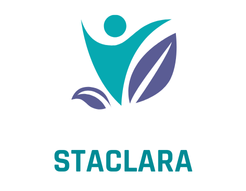Psoriatic arthritis presents unique challenges for patients. Understanding treatment options is essential for effective management. Biologic therapy offers distinct advantages over traditional DMARDs, including targeted action and potentially fewer side effects. This shift in treatment paradigms allows for individualized care that can lead to improved quality of life. Explore how these advanced therapies can transform your approach to managing psoriatic arthritis and discover which option may best suit your needs.
Overview of Psoriatic Arthritis Treatment Options
Understanding psoriatic arthritis is crucial for effective management. This condition, affecting approximately 30% of people with psoriasis, involves inflammation of the joints and skin. Treatment aims to relieve symptoms, improve joint function, and prevent further damage.
Also read : Exploring the Efficacy of Platelet-Rich Plasma Therapy for Chronic Tendon Injury Recovery
Treatment Goals and Strategies
The primary goals in managing psoriatic arthritis include reducing pain and swelling, maintaining joint mobility, and improving quality of life. A comprehensive approach often combines medication, lifestyle changes, and physical therapy.
Biologic Therapies and Traditional DMARDs
Biologic therapy offers targeted treatment by inhibiting specific components of the immune system. These medications are particularly effective for patients who do not respond to conventional treatments. Traditional DMARDs (Disease-Modifying Anti-Rheumatic Drugs) such as methotrexate are commonly used to slow disease progression and manage symptoms.
Have you seen this : Exploring the Benefits of Telehealth for Delivering Mental Health Care to Rural Communities
-
Biologic Therapy:
-
Targets specific immune components
-
Suitable for severe cases
-
Includes TNF inhibitors
-
Traditional DMARDs:
-
Slows disease progression
-
Suitable for moderate cases
-
Often used as first-line treatment
In summary, a combination of biologic therapy and traditional DMARDs can be tailored to individual needs, offering a comprehensive solution for managing psoriatic arthritis effectively.
Efficacy of Biologic Therapies vs. Traditional DMARDs
Exploring the effectiveness of biologic therapies and traditional DMARDs provides insight into their impact on psoriatic arthritis.
Comparative Effectiveness
Both biologic therapies and traditional DMARDs demonstrate efficacy in reducing symptoms and preventing flares. Biologics often show superior efficacy for severe cases, targeting specific immune pathways to provide rapid relief. In contrast, traditional DMARDs like methotrexate are effective for moderate symptoms, slowing disease progression over time.
Long-term Outcomes
Long-term data reveal that biologic therapies can significantly alter disease progression, offering sustained improvement in joint function. Studies indicate that patients on biologics experience fewer joint erosions compared to those on traditional DMARDs. However, traditional DMARDs remain a cornerstone for long-term management, especially when combined with lifestyle interventions.
Patient-Reported Outcomes
Patient feedback underscores the quality of life improvements with both treatment types. Many report enhanced daily functioning and reduced pain with biologic therapies, while others appreciate the stability provided by traditional DMARDs.
-
Biologic Therapies:
-
Quick symptom relief
-
Improved joint health
-
Higher patient satisfaction
-
Traditional DMARDs:
-
Long-term stability
-
Cost-effective
-
Widely accessible
Understanding these distinctions helps patients and healthcare providers make informed decisions tailored to individual needs.
Safety and Side Effects of Treatment Options
Examining the safety and potential side effects of psoriatic arthritis treatments is essential for informed decision-making.
Common Side Effects of Biologic Therapies
Biologic therapies, while effective, can present specific side effects. These may include increased risk of infections due to immune suppression. Some patients report injection site reactions or allergic responses. Regular monitoring is crucial to mitigate these risks.
Side Effects of Traditional DMARDs
Traditional DMARDs like methotrexate also have notable side effects. Common issues include liver toxicity and gastrointestinal disturbances. Regular blood tests are recommended to monitor liver function and blood cell counts, ensuring safety during treatment.
Risk-Benefit Analysis
When considering treatment, a risk-benefit analysis is vital. Patients and healthcare providers must weigh the potential side effects against the benefits of symptom relief and disease control.
-
Biologic Therapies:
-
Risk of infections
-
Injection site reactions
-
Requires regular monitoring
-
Traditional DMARDs:
-
Liver toxicity
-
Gastrointestinal issues
-
Monitoring essential
Understanding these adverse reactions can help patients choose the most suitable treatment, balancing efficacy with safety considerations.
Cost Considerations and Accessibility
Exploring financial aspects and availability of treatments.
Cost Comparison
When evaluating cost between biologic therapies and traditional DMARDs, significant differences arise. Biologic therapies often come with higher price tags due to their complex manufacturing processes and targeted mechanisms. Conversely, traditional DMARDs are typically more affordable, making them accessible for many patients.
Insurance Coverage
Insurance plays a crucial role in treatment affordability. Many insurance plans cover traditional DMARDs as they are considered first-line treatments. However, coverage for biologic therapies may require prior authorization, reflecting their higher cost. Patients should explore their insurance policies and consult with healthcare providers to understand their options.
Impact on Patient Adherence
The cost of treatment can significantly influence patient adherence and outcomes. High treatment costs may lead patients to skip doses, impacting the effectiveness of their therapy. Financial assistance programs and patient support initiatives can help alleviate this burden, ensuring consistent access to necessary medications.
-
Biologic Therapies:
-
High cost
-
Complex insurance requirements
-
Financial assistance available
-
Traditional DMARDs:
-
Lower cost
-
Easier insurance access
-
Widely prescribed
Understanding these financial dynamics is essential for making informed decisions about healthcare access and treatment affordability.
Expert Opinions and Patient Testimonials
Insights from professionals and experiences from those living with the condition.
Insights from Rheumatologists
Rheumatologists provide invaluable expertise in treatment decisions for psoriatic arthritis. They emphasize the importance of personalized care, considering patient history and response to previous treatments. Dr. Jane Smith, a leading rheumatologist, states, "Selecting the right therapy involves both clinical evidence and patient preferences."
Case Studies Highlighting Patient Experiences
Real-world patient experiences offer a window into the effectiveness of therapies. John, a 45-year-old patient, shared his journey: "Switching to biologic therapies significantly improved my joint pain." Meanwhile, Sarah found stability with traditional DMARDs, saying, "Consistency in medication has kept my symptoms in check."
Guidelines for Shared Decision-Making
Shared decision-making is crucial in selecting the best treatment options. Patients and healthcare providers should collaboratively evaluate the benefits and risks of each therapy. A structured approach may involve:
- Discussing treatment goals
- Reviewing potential side effects
- Considering patient experiences
This collaborative process ensures that treatment decisions align with both medical advice and individual preferences, leading to improved outcomes and patient satisfaction.











